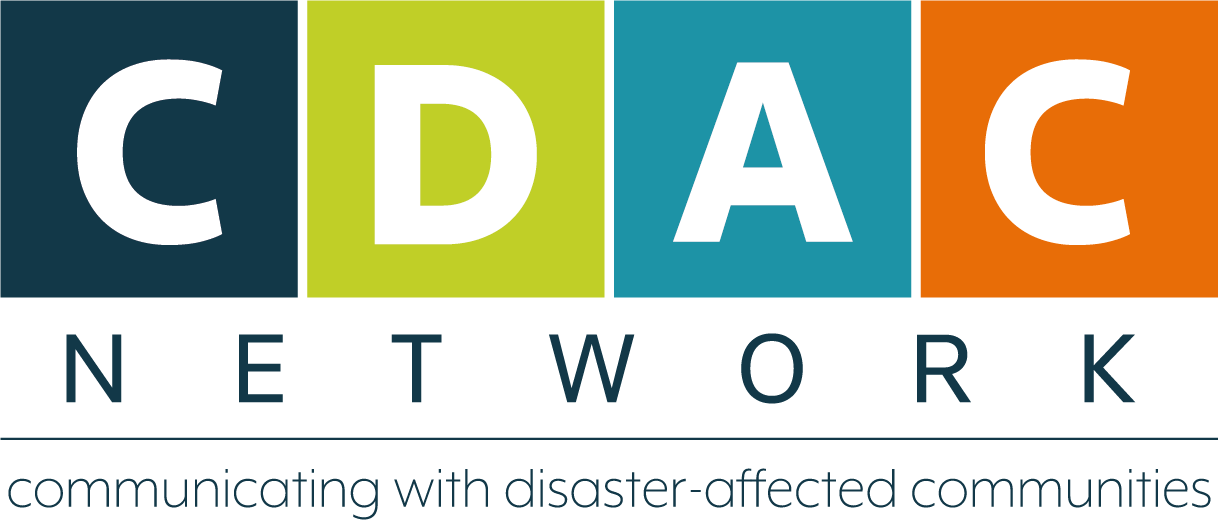March 2025 Thailand/Myanmar earthquake portal - key messages and resources
On 28 March 2025, a 7.7 magnitude earthquake hit Myanmar and Thailand. Currently the earthquake has reported to have killed more than 2,700 people in Myanmar and 21 in Thailand. We have put together key communications and community engagement messages for those working with, and supporting, communities in the first phase of the earthquake response. This portal is continually updated: if you have resources to share, please send them to info@cdacnetwork.org.
Key messages for the first phase of an earthquake response:
People need actionable information to make well-informed decisions now
Leverage and amplify timely government messaging and public information in relevant languages through multiple, accessible channels.
Communicate clear, actionable information on critical topics using people’s preferred formats, channels and languages, including local languages. This can be informed by existing analysis such as media mapping.
Work with diverse and trusted local actors – such as local NGOs, human rights organisations and trusted local press – to disseminate messages widely, including to hard-to-reach communities.
Ensure communication in the diverse dialects and languages of affected people
Consider the different languages and dialects of affected people in CCEA strategies. Pay special attention to differences in written and spoken language needs to ensure those with lower literacy have equal access to information.
Include standard questions on language and communication preferences in needs assessments. Disaggregate other data by language to see where language marginalisation might be causing gaps in access to services.
Use the channels that people trust and use. Bear in mind that in a situation of power cut media that relies on electricity may be less reliable (and radio may be more important).
Prioritise channels that people trust to disseminate accurate information to communities, ensuring consistent messaging across levels and languages.
Map and understand the full spectrum of channels that people use – including face-to-face communication in community settings.
Engage with messaging and social media channels, but be aware that connectivity and smart-phone usage is lower.
Counter mis- and disinformation with consistent, accurate information
Refer to analyses of communication channels and sources, and be prepared to monitor rumours in multiple languages.
Ensure a cycle of listening and conversation to identify rumours; verifying and triangulating facts; and engaging with communities to share verified information.
Work with other agencies. A collective approach will save time and resources, while reducing information burden on communities.
Key CCEA resources
Minutes from CDAC Network Crisis Call on Myanmar Earthquake response (31/03/25)
The Türkiye–Syria earthquake response six months on: lessons on communication, community engagement and accountability – CDAC Network
How-to guide on collective communication and community engagement in humanitarian action – CDAC Network
Capacity decision framework for CCE/AAP – CDAC Network
Information management guidance for CCE/AAP – CDAC Network
IFRC Feedback Kit – Community Engagement Hub
Information & messaging provision
Online training and Guidebook: Assessing and responding to information-related protection risks (Burmese and English) - Internews
Local media and community engagement in humanitarian settings – Internews
Topic-by-topic communication guides for local media reporting on critical post-earthquake topics such as shelter, protection, psychosocial support, and water, sanitation and hygiene (WASH) – BBC Media Action
Lifeline production manual for journalists (English, Burmese) – BBC Media Action
Guide for humanitarians on working with media (English) – BBC Media Action
Engaging with people affected by armed conflicts and other situations of violence – International Committee of the Red Cross (ICRC)
CCEA needs assessment
Communication needs assessments – CDAC Network
Information ecosystem assessments – Internews
Community engagement and accountability (CEA) toolkit: Questions to integrate into assessments (tool 13) – International Federation of Red Cross and Red Crescent Societies (IFRC)
Menu of AAP-related questions for multi-sector needs assessments – Inter-Agency Standing Committee (IASC) AAP and Protection against Sexual Exploitation and Abuse (PSEA) Task Team and REACH
Language-related questions for new and ongoing surveys – CLEAR Global
Rumour tracking
Rumour has it: A practice guide to working with rumours (English) – CDAC Network
Managing misinformation in a humanitarian context – Internews
Online Training: Managing misinformation in Myanmar (Burmese) - Internews
In order to attend this course, you need to open a profile in the Internews Studio app in https://studio.internews.org/login/signup.php?tenant=public&lang=my, which also allows you to access Internews' full course. Once you have logged in, use this live course link to register: https://studio.internews.org/enrol/index.php?id=223.
Language & translation
Useful map of the main languages of Myanmar - Myanmar IM Unit
Myanmar Glossary - CLEAR Global
Five easy steps to integrate language data into humanitarian and development programmes – CLEAR Global
Other resources
Are you listening now? Community perspectives on communication with communities during the Nepal earthquake – CDAC Network
Ann kite yo pale (let them speak): best practice and lessons learned in communication with disaster affected communities, Haiti 2010 – CDAC Network
Nepal earthquake – BBC Media Action

